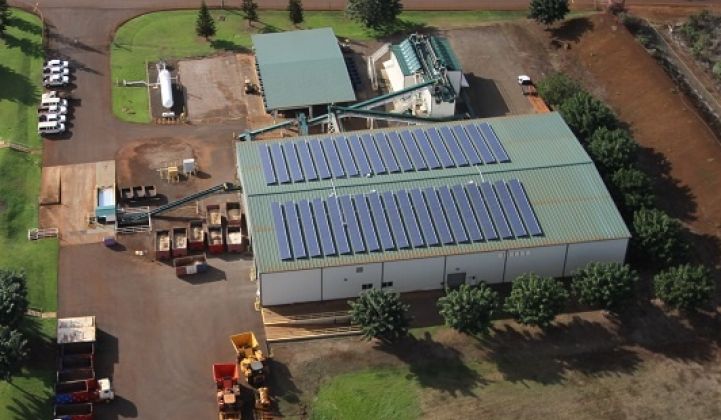The Hawaii Public Utilities Commission issued a ruling on October 13 that brought a halt to new net energy metering (NEM) applications on the Hawaiian Islands. Hawaii’s net metering program was highly successful and instrumental in fostering the development of a robust solar industry, which leads the country in per-capita installed solar capacity. Today, there is roughly one solar panel (312 watts) installed per resident in Hawaii, which is seven times higher than the national average, according to a recent report by Environment America.
While The Alliance for Solar Choice has filed a lawsuit seeking an injunction on the NEM decision, here are a few important things you should know about this development as it currently stands:
- The ruling does not impact existing net metering customers. HECO will still review net metering applications submitted before October 13, 2015. So, for any business that has already tapped into Hawaii’s solar resources, you can stop reading and hit the beach!
- Although the end of net metering in Hawaii will have a negative impact on the ROI and NPV of future projects, the sun is still shining: a commercial solar system remains an attractive investment for many Hawaiian businesses. In fact, with the expiration of the federal solar Investment Tax Credit looming, now is the time to act!
In the absence of net metering, the HPUC has ordered two new interconnection options for solar power producers: “customer self-supply” and “customer grid-supply” tariffs. Here’s a brief overview of what each looks like.
Self-supply tariffs
This is all about batteries, which are becoming increasingly attractive as global economies of scale continue to drive down equipment prices. HECO’s new self-supply option provides commercial customers that install batteries with an expedited review and approval process. Here’s the catch: approved customers will only be allowed (see page 118) “a limited amount of inadvertent export to the grid with zero compensation.” For customers interested in meeting their usage with solar, this could be worth consideration; however, most companies should take a closer look at the next option.
Grid-supply tariff
Under the grid-supply tariff option, companies that install solar will be compensated for reverse power flow at rates between 15.07 cents and 27.88 cents per kilowatt-hour for the next two years, depending on the island. Those credits are limited to a company’s monthly consumption, and will not carry over to the following month. Here’s the breakdown of credit rates by island:
- Oahu: 15.07 cents
- Hawaii: 15.14 cents
- Maui: 17.16 cents
- Molokai: 24.07 cents
- Lanai: 27.88 cents
This new program is intended as only a short-term bridge for distributed energy generators, and we should expect that it will eventually be reviewed and amended. The grid-supply tariff program will be capped at 25 megawatts for the Oahu (HECO) service territory and 5 megawatts for both Maui (MECO) and the Big Island (HELCO) grids.
Standard interconnection agreement
For companies that want to install more than 100 kilowatts AC on their facility with only one meter, there is a Standard Interconnection Agreement (SIA) available that has no size limit. The only limiting factor is on-site load. The SIA is ideal for large energy consumers that are looking to reduce their price per kilowatt-hour.
Community solar
Good news on the horizon: community solar is also coming to Hawaii in the near future. This will allow consumers to participate in a solar purchase without being physically connected to the system. We are seeing universal support for community solar across government, industry groups, the public and the island utilities.
Smart commercial solar design
The shift from net metering to the lower, flat-rate grid-supply tariff creates an important new imperative for commercial solar providers: in order to maximize ROI, solar systems should be designed to closely follow the load profile of the building. You could think of solar in this context as a form of energy efficiency or demand response.
For example, let’s say your grocery store uses a large amount of energy for refrigeration in the afternoon. A southwest-facing solar system will increase energy generation between 1 p.m. and 3 p.m., helping to offset peak afternoon loads and therefore maximizing system ROI. Although this design would decrease total system production, it would increase production coincident with demand, making it more valuable energy.
Achieving this goal, however, requires interval data. Unfortunately, most utility meters in Hawaii do not record interval data. It’s important to know how much and when businesses consume energy in order to design a solar system that matches production to facility load and maximizes the offset. If a business already has interval data, then it can start working on the most efficient solar system design immediately.
Even with the change in the NEM program, photovoltaic systems can still help commercial businesses save money and show a strong environmental commitment to the community.
•••
Drew Bradley is director of business development at REC Solar Hawaii.



